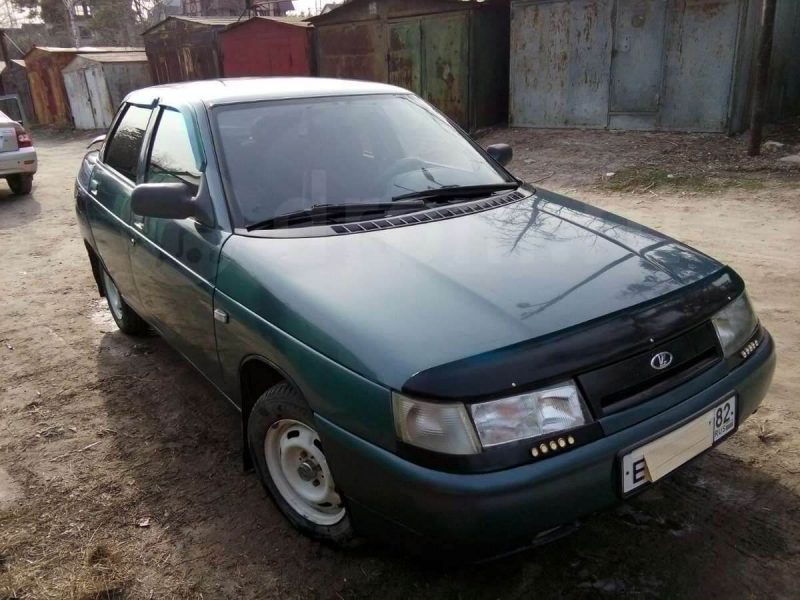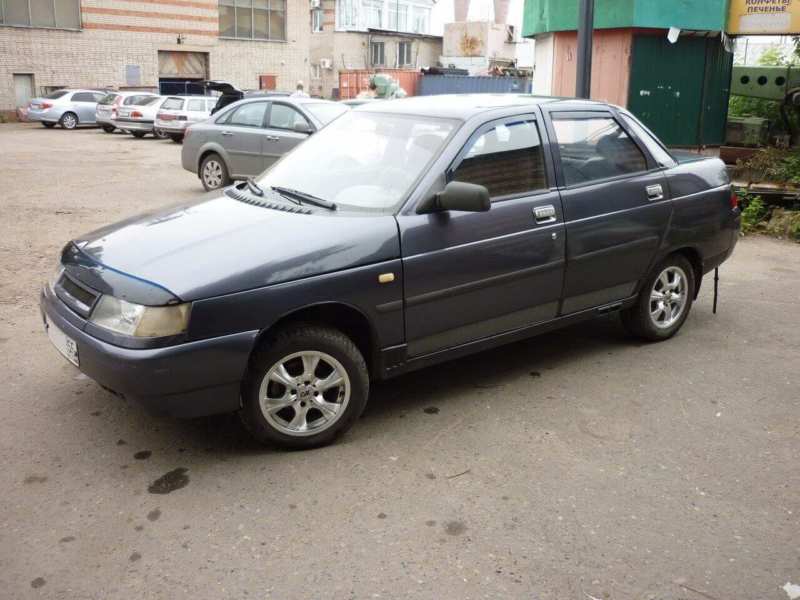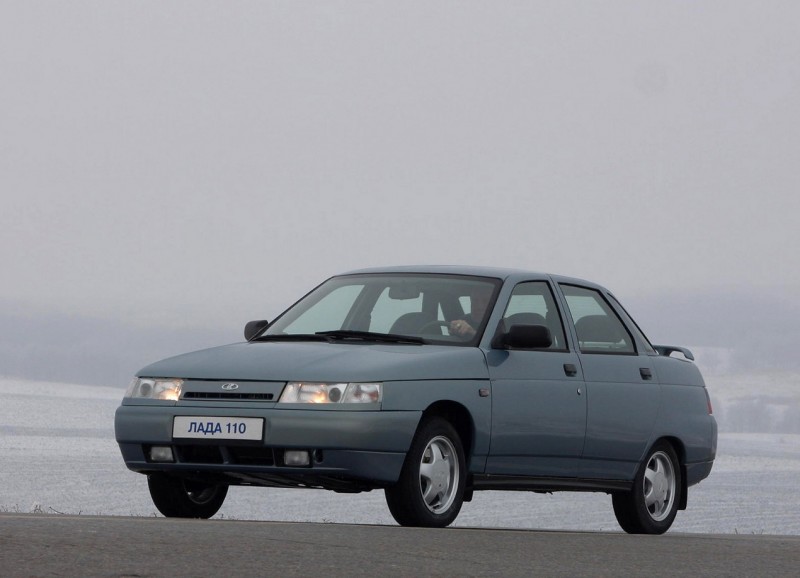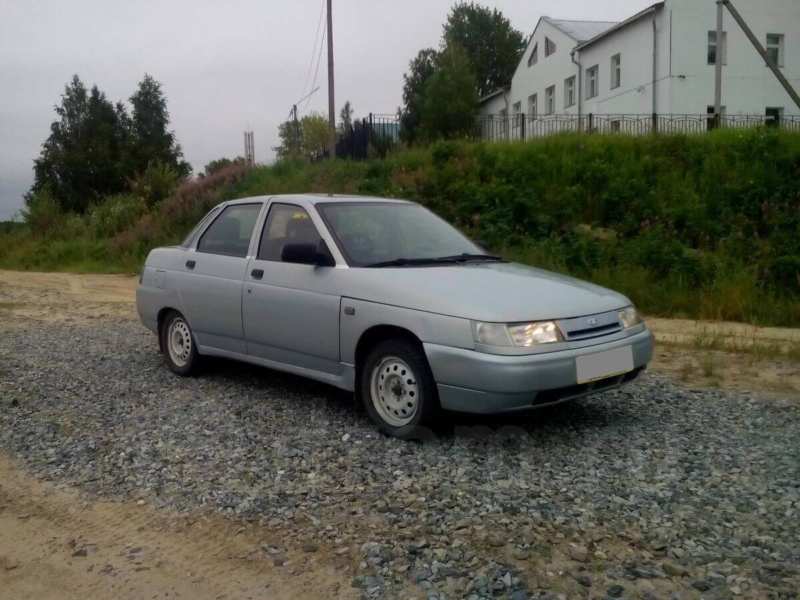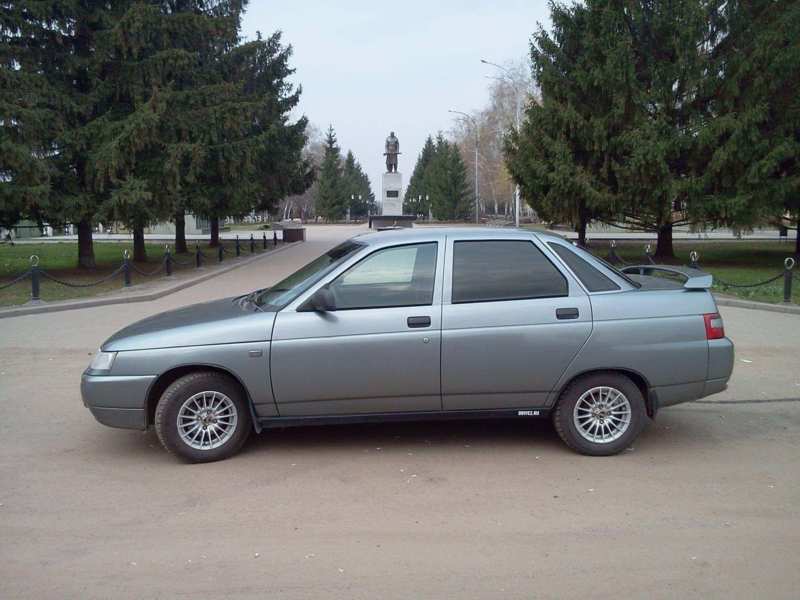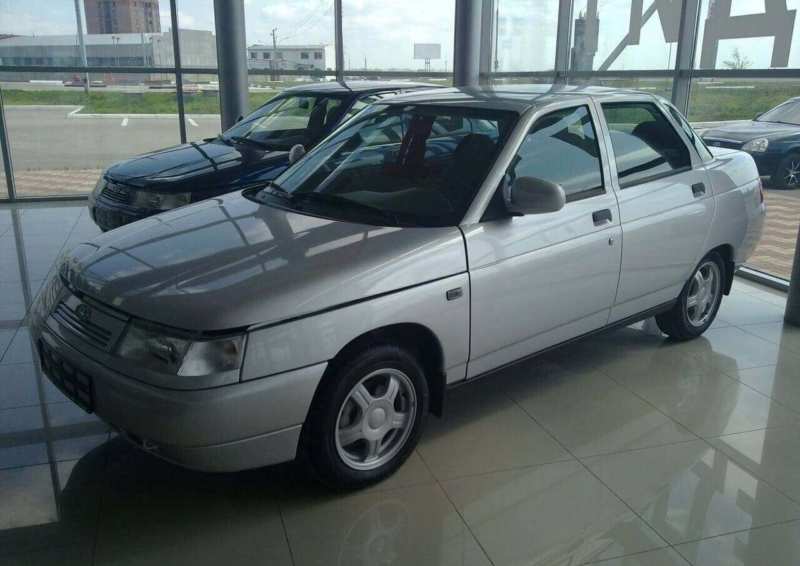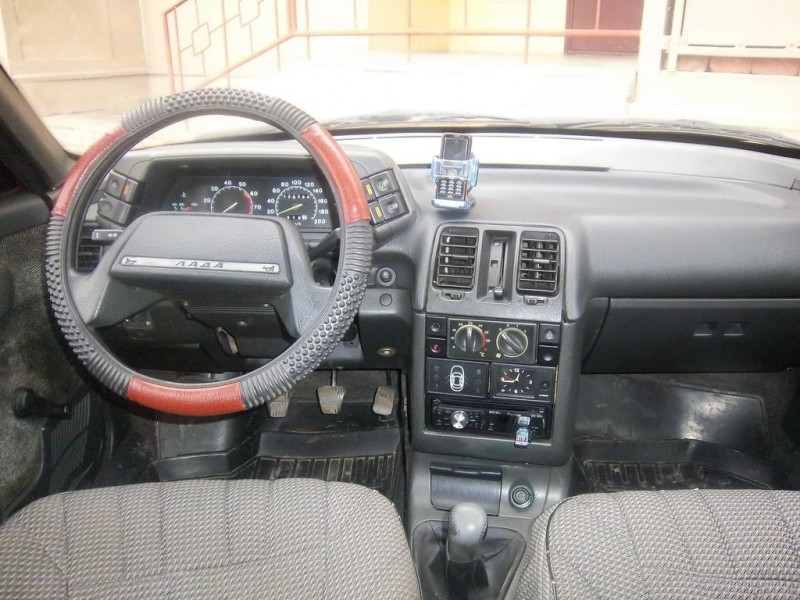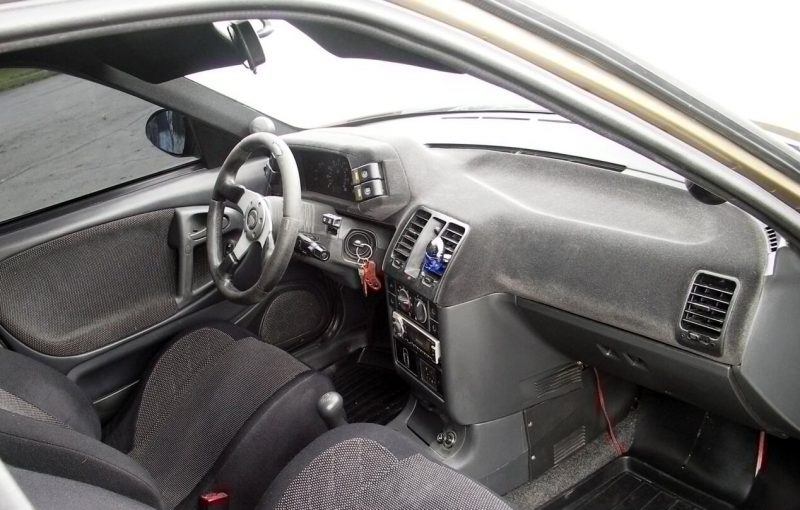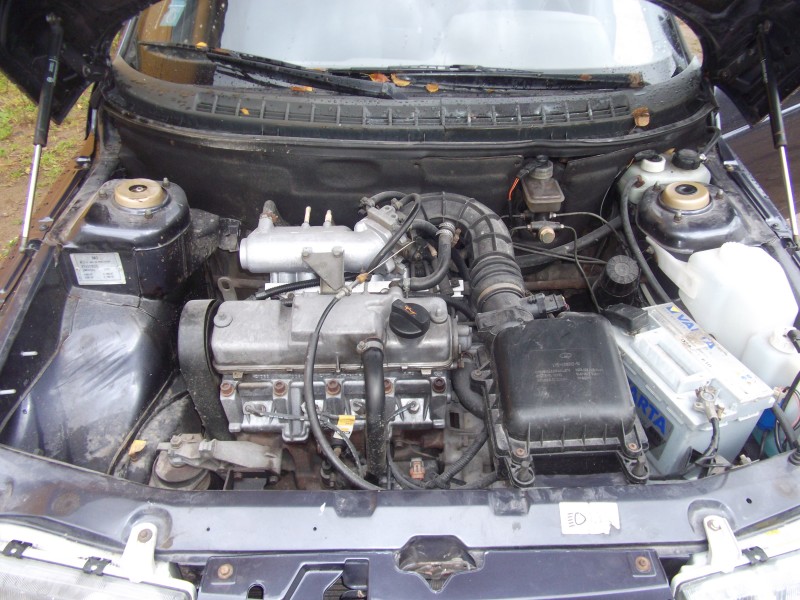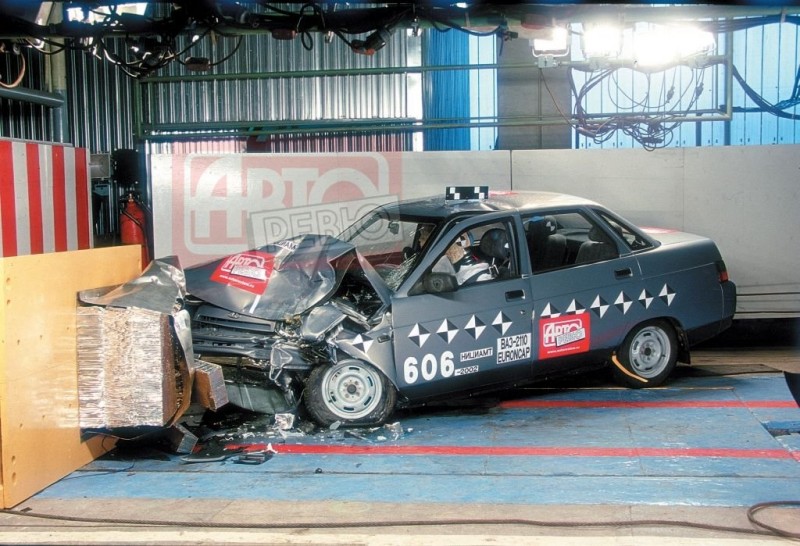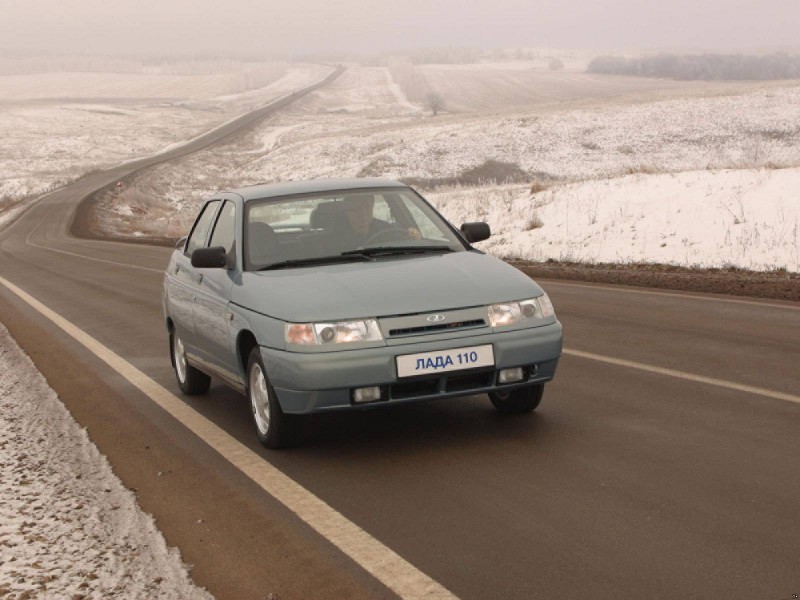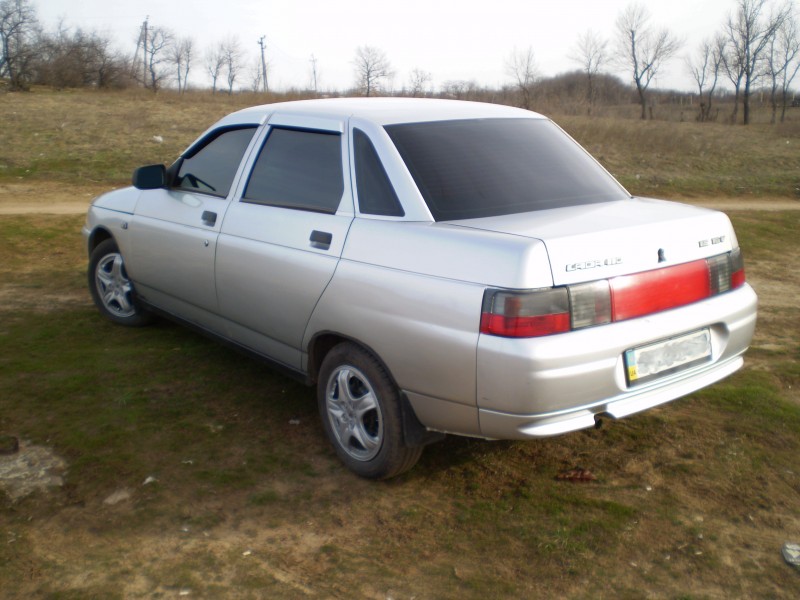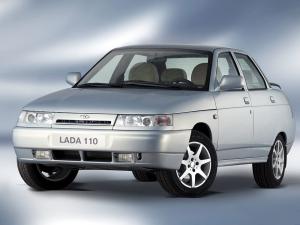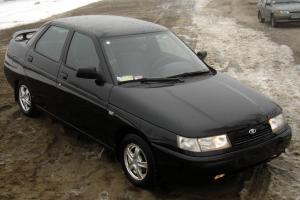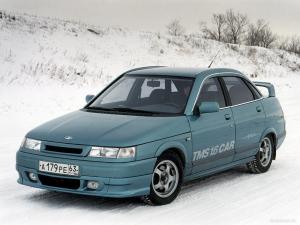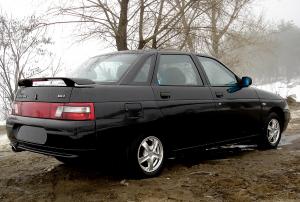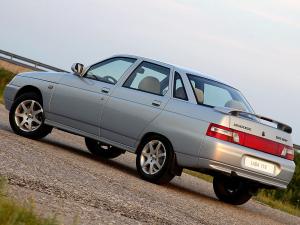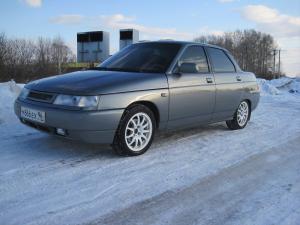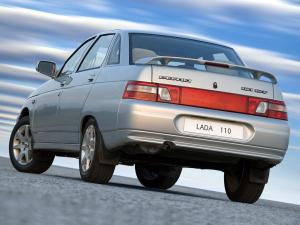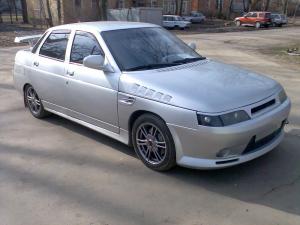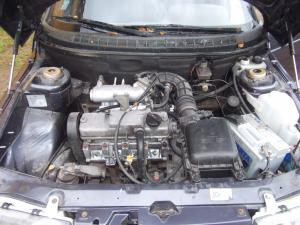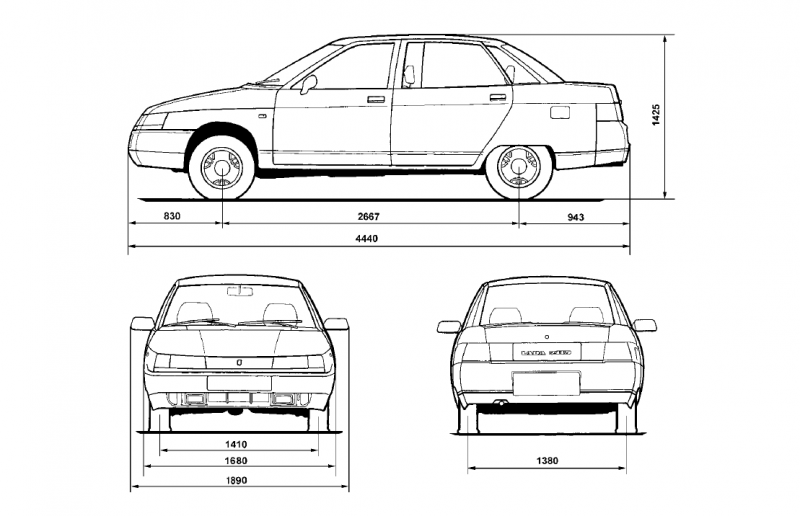VAZ-2110
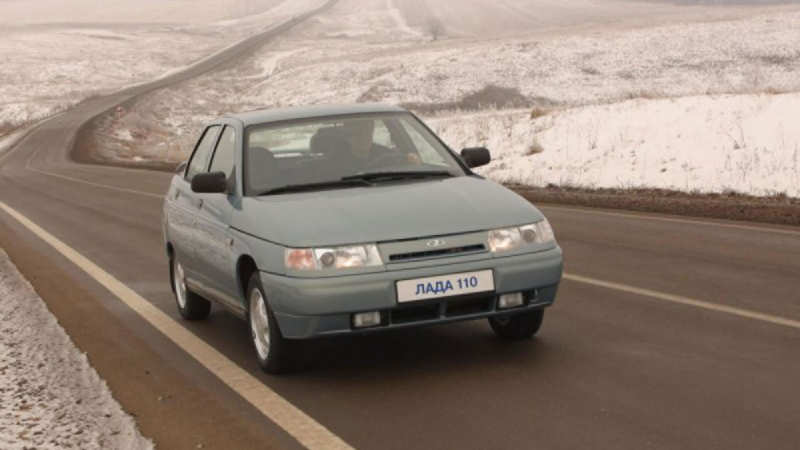
VAZ 2110 – Russian front-wheel drive sedan. In the common people’s language – “ten”, which means the model. Serial production of Lada 2110 began in 1996. Initially, the car was produced only in the sedan body. Later, the giant supplemented the range with hatchbacks and wagons. For the first time the model 110 was demonstrated to the then President of Russia Boris Yeltsin during his visit to the Volga Automobile Plant in 1992.
But the economic crisis prevented the car from being put into mass production quickly. The appearance of the new model led to many innovations noticed by domestic drivers. For them, the “ten” has become almost a foreign brand. Production of the “ten” ended in 2007, and it was replaced by a new model – Lada Priora. The whole model range is Lada.
Car history
In addition to the fact that the Lada body of the tenth family had smooth lines and was not like the body of the already bored “99th” model, the 110th model was able to bring an abundance of new elements, which had not previously been on vehicles manufactured by the Volga Automobile Plant. Among the innovations – the availability of adjustable steering wheel, glued glass, gas support hood and air conditioning.
Following the fact that the Lada 110 began to be equipped with a sixteen-valve powertrain, it became clear to everyone that “it is better not to joke with Tazy”, as the car could have left even some foreign cars behind. The “Ten” was produced with three versions of equipment: standard, standard and luxury. Despite the stop of Lada 2110 production in the Russian Federation, in Ukraine the model is still produced as Bogdan 2110.
Work on the construction of the 10th model was started back in 1983. The very first car of this class was to be sedan with rear-wheel drive configuration. But the developments could not reach their own finish line. A little later, the company decided to start development of the vehicle on the platform VAZ-2108.
However, the price of this car was very high, so the developers decided to freeze the project as well. Over time, all the developments have resulted in the car VAZ-21099. At first, the car was produced with a carburettor power supply system, and after 2000 they decided to install a fuel injection (injector).
Exterior
At the time of its release, VAZ 2110 had a modern look, but at the same time it became a subject of criticism and discussion among automotive experts. Many people believe, looking at some elements, that the design of the car is unattractive. The most problematic area of design is the rear wing.
Feed VAZ, if you look at the profile, it seems too heavy. Although, if we compare it with VAZ 21099, the new model has significantly improved aerodynamic performance. And as a result, the new VAZ 2110 has become more economical. There are no rectangular shapes, as on the “samara”, and in general the car looks neat.
Now bumpers are painted in body color, even in the cheapest modifications. This gave a characteristic look, especially in those times when even in foreign cars it was not always possible to meet similar. And the most expensive modification was the suite, which had additional headlights on the front bumper, additional headlights behind the rear window.
All body parts that are subject to corrosion are galvanized. The body component of the 10th Lada is more than half made of galvanized steel, which in itself increases the corrosion resistance. However, even buying a galvanized VAZ model, you won’t have to rest on the laurels, because those who haven’t done anticorrosion treatment, could notice rust on the bottom of the car. Therefore, there is one conclusion – it is necessary to make anticorrosion despite the galvanized steel.
Starting with the equipment “norm”, it is planned to paint “metallic”, and already in “Lux” VAZ-2110 comes with fourteen-inch cast wheel rims. Thanks to glued glass body stiffness increases, which is undoubtedly a plus, but the gaps between the body panels in some places can reach a mark of 7 millimeters.
If we talk about door handles, they are made under the lower grip, and this in turn indicates that the vehicle has been developed for a long time. The larval of the lock, which is mounted separately from the handle itself, indicates the budget of the sedan of the Volga Automobile Plant.
The appearance of the new model clearly differed from the already used “chisel shape” of cars, which were produced by the Volzhsky Automobile Plant. Due to the reduction of the drag coefficient, it was possible to reduce fuel consumption.
The machine’s dimensions have been increased in length, height and width, and the track gauge has been increased along with the base. The addition was also made by weight. Speaking of the latter, it is worth noting that the increase in weight allowed the “ten” look more solid, which raised it in the table of ranks by half a step higher.
Because of this, we had to make changes in the “walk”, although the most important decisions have remained the same. Looking at its appearance, you notice that the “brainchild” of domestic automobile production has become heavier and dimmer. Although, if we evaluate each element, everything is at its level.
There is a presence of licked surfaces, staining of powerful bumpers by body color, cute, though too chubby “ass”. However, if all this is put together, for unknown reasons it does not add up. A characteristic “chiseled” splinter, which was the case with the previous VAZ models, can’t be found here, fortunately.
The front glass on the car is glued, which indicates the absence of a standard sealant. The windscreen wiper leash began to have an aerodynamic hold-down. If we talk about the luggage compartment (where we can take the VAZ 2111), the opening became wider, and the loading height – lower.
Interior
When starting to create the interior, the designers took into account some of the shortcomings of past models and corrected them. Now the driver sits behind the wheel with outstretched legs, not as before, with bent legs. He changed his appearance and the steering wheel itself, he became much more beautiful. It has two points of support for hands with a pillow, and it no longer covers the visibility of devices. The designers used soft plastic in the dashboard, which looks beautiful and pleasant to the touch.
This reduces the likelihood of noise and squeaking. In the new models, all large mechanical buttons are located on the sides of the dashboard. Climate control is intuitive. The steering column is vertically adjustable and has a hydraulic booster. But, despite the updated steering wheel, its rim itself seems to most people too thin. The rear seats are comfortable enough, but the three passengers will be too tight. Luggage compartment has a volume of 480 liters.
Norm set has front power windows (it does not matter if there is a servo drive or not, they do not fall into the door fully), velour covers of chairs and doors, as well as head restraints on the rear sofa. The most expensive suite is equipped with an on-board computer, heated rear-view mirrors and heated seats installed in front.
The keys installed on the sides of the dashboard do not allow you to forget that the car began to be designed back in the 1980s. Fuses and relays for the most important car options are located inside the car, on the left side under the steering wheel, which is very convenient. The famous samara wasn’t so comfortable. We thought of loading narrow long things – for this purpose, the middle backrest of the rear sofa can be tilted fully, and the backrests of the rear seats can also be tilted, but at a smaller angle.
Despite the still rather small free space inside the car, the updates of the front panel and other elements had a positive effect on the ergonomics of the cabin, which in turn encouraged many consumers to buy the 2110.
The external door handle has become much better. A tongue from the well-known “eight” has disappeared, and now the door began to open as usual by moving the lever upwards. Speaking of the doorway, it is worth saying that it has become quite comfortable, based on the width, but it is small in height. Not to say that this will interfere, but there is a lack of height reserve.
However, the door itself is no longer a problem, partly due to the sharp top corner. People of medium height have no reason to be afraid, but those who are slightly higher, it is worth to be careful, as they can easily bump into it. In addition, the designers have limited the angle of opening the door, which has only one intermediate fixed position. The fact that the threshold, which on 2108 in bad weather was always covered with a layer of dirt, now, thanks to the design features, always remains clean.
This is a very important point, because you can easily get your clothes dirty when you get into the car, touching the edges of the threshold. The driver can see another dashboard, which no longer has “oak” molded plastic – now the panel is made of soft elements that resemble the materials used in the VAZ “classic”. Almost everywhere it became a little more comfortable due to the new upholstery of the chairs, a fluffy ceiling. Only the door upholstery remained moulded, however, and it became better.
Pleasant details include height adjustment of seatbelts and locking of doors by means of a central locking system. The driver’s seat is more comfortable. The cushion together with the backrest were increased in width and began to distribute the load better.
You can’t find that annoying roller in the lumbar region that was on the G8s anymore. Of course, there was no side support as it used to be, so there is no side support now. The seat is still adjustable in only two positions, and the adjustments are still mechanical.
The VAZ 2110 gearbox lever has been lengthened, which may be explained by the desire to reduce efforts during the gear shift. The most important sensors – speedometer and tachometer – now occupied the necessary place in the central part of the dashboard, and direction indicators were placed on the sides. The central console was equipped with indicators of the onboard control system.
Specifications
Powertrain
The first VAZ-2110s were equipped with a carburetor, but specially for this model “automatic suction” without the use of the suction lever, which is present in conventional types of carburetor.
The VAZ 2110 engine had a volume of 1.5 liters and an output of 69 hp, which contributed to the economic consumption of fuel – about 7.5 liters per 100 km. A little later, the injector 16-valve engine with a volume of 1.5 liters, which develops 94 horses, debuted. It had a DOHC type gas distribution mechanism.
Such an engine would reach a speed of 100 km/h in 12.5 seconds, and the maximum speed was 185 km/h. Lada-2110 technical equipment, where there was a sixteen-valve engine, looked rather worthy, in comparison with inexpensive foreign cars of those years. The last engine update was in 2004 – then the volume was increased by 100 cubic cm.
The dynamic component of the 69 hp engine is unlikely to impress even the driver 2106, but the reduced fuel consumption by 12 percent, compared to 99th, often lured customers. The speed limit with such an engine is about 162 kilometers per hour.
Also, after a while the injector 8-valve power unit 21102 was produced, the capacity of which was already 78 horses. The first hundred was reached in 14 seconds, and the maximum speed was at the level of 170 kilometers per hour.
Despite the more modest technical capacity compared to the 1.5-liter engines, the new engines had a higher torque. More importantly, the 1.6 16v valves were not bent during the belt break of the gas distribution system, as was often the case with 1.5 16v engines.
In the injector version of the engine the nozzles are very often damaged, but they can be repaired by the operator or given for repair to specialists. This video shows how to clean and rinse the nozzles by yourself.
But very often, when you do it yourself, you can make a lot of mistakes and break even a very working nozzle. Therefore, we advise you to contact a specialist, where to repair the nozzles very quickly and efficiently and even with a guarantee. Why we advise the company “repair of nozzles” – because they can take up even such a repair, which everyone refuses, work throughout Russia and the CIS countries, have a direct supply of spare parts from manufacturers, there is express delivery.
In addition to these engines in the Russian Federation can be found “Ten” with a two-liter powertrain Opell X20XEV, which was mounted a little earlier on the Opel Vektra A in one of the most powerful designs. Having such a powerful engine on board, the first hundred VAZ-2110 reached the level of 9.5 seconds, and the maximum speed limit is 205 km/h.
Transmission
VAZ 2110 gearbox is represented by a manual five-speed gearbox with synchronizers on all main gears. The main gear is cylindrical, helical gear. The differential is bevel, two-satellite. Clutch is single disc, dry, diaphragm.
The machine is perfectly repairable, and the parts for it are not as difficult to find as for other cars. Not in vain many advise as the first car Lada-2110.
Suspension
Front suspension independent, with telescopic hydraulic shock absorbers, screw cylindrical springs, lower crossarm with tighteners and stabilizer of transverse stability.
The rear suspension consists of levers that are aggressively fastened with a transverse support, screw springs that act as a spring element, as well as telescopic double-acting shock absorbers.
Steering wheel control
Hydraulic power steering can be installed. The steering mechanism is a rack and pinion.
Brake system
All Lada-2110 models are equipped with disc brakes in front, which are also ventilated in the latest version. The rear wheels are equipped with drum brakes.
Safety
The Russian car VAZ-2110 was also tested for crash-test. The results of the tests carried out in Togliatti turned out to be quite good, if we compare them with the Volga, which out of 16 points was only able to get meager 2.
After the frontal impact, the driver’s front door was in place, and there was not even a single fold on it, and the windshield counter was only slightly bent. However, the front door did not open due to the fact that it supported the rear door. This is not a hopeless option, as it is possible to leave the car with the right door.
But what happens to the mannequins? Sensors, which were installed on them, did not show dangerous overloads! Despite the fact that the driver hit the steering wheel and dashboard roughly, and the passenger sitting next to it hit the front panel, the index of head damage does not exceed the safe limit – 650 units.
This makes it possible to conclude that the probability of head injury from people who are wearing a seatbelt is less than 5%. Important advantages of the sedan were confirmed – strong power structure of the cabin. The conclusion is as follows – before softening, and the saloon is full. This was achieved thanks to safety bars, which were welded into the front doors. The material of the bars is not light bars, but steel pipes.
They were able to withstand the collision and sled seats, again, not by themselves, and thanks to the upgraded profiles of the teeth of the retainer. The low load on the head of the dummy collided with the steering wheel was achieved by the fact that the vozovtsy have made it safe for injuries.
The corners of the visor were rounded and the front panel was made of soft plastic. But there were obviously large overloads on the chest from the seat belts, so the tarred spring was squeezed by 0.40 cm, and in the chest of the next passenger sitting next to him by 0.45 cm.
This is partly due to the absence of an airbag that would soften the result of a sudden and rough stop of the car. Thus, the load exceeds 800 kg. On the 10th, the steering wheel was shifted slightly back and forth (0.95 and 0.45 cm, respectively). Moreover, the steering wheel moved to the right by 1.10 cm, and this is already exceeding the qualified limit of transverse movement of EuroCAP.
As for the legs, there’s a great danger of damaging them. For example, the right leg is hit by 730 kilograms. Even the pedals have exceeded the allowable threshold – they have reached the back by 205 mm, and according to the European standards, the displacement of pedals more than 200 mm is already a critical indicator.
As a result of calculations and summing up the results, VAZ-2110 scored 4 points, which is twice as high as in the Volga 3110, and like in Svyatogor. If we talk about what is missing in the ten, it’s modern seat belts, airbags, bodywork modification, changes in the lower part of the front panel and other pedals.
Crash Test
Modifications
- VAZ-21100 is a carburettor wax valve with the volume of 1.5 liters (produced since 1996-2000-th year);
- VAZ-21101 is an eight-valve valve, which volume is 1.6 liters;
- VAZ-21102 – eight-valve valve, volume 1.5 liters;
- VAZ-21103 is a six-valve engine with a volume of 1.5 litres;
- VAZ-21104 – hexadecimal power pack, volume 1.6 liters;
- VAZ-21106 – Engine from Opel GTI 2.0 16V – 2.0-liter sixteen-valve engine, developing 150 horsepower and able to reach a maximum speed of 205 km / h. Initial hundred kilometers per hour VAZ 21106 gains in 9.5 seconds;
- The VAZ-21106s is based on the VAZ-21106 platform. Data on technical nuances are the same as those of VAZ 21106. It has the following modification: power steering, unique interior, electric hatch, fog lights and disc brakes, which was installed not only on the front wheels, but also on the rear wheels;
- VAZ-21107 is a machine with a sixteen-valve two-liter Opel engine, which is designed on the platform 21106. This model was set up for a sporty ride style, championships and rally;
- VAZ-21108 – “Premier” – a version of the Russian sedan, which was slightly lengthened;
- VAZ-21103;
- VAZ-21109 – “Consul” is a four-seater limousine with an engine capacity of 1.5 liters. The length of the limousine reaches 5 meters;
- VAZ-2110-91 – “Rotor-Sport”. The start of production was started in 1996 and ended in 2004. The 1.3-liter rotary piston power pack was used. Such machine is the fastest among its “family”. The maximum speed reaches 240 km/h. It reaches the first hundred in some 6 seconds. The car is adjusted to the ring race.
Complete sets and prices
The 2110 is no longer in production today. The price on the secondary market varies from $3,000 (carburetor version) to $5,000 with an injector and a more decent look. The factory has provided three modifications: standard, standard and luxury. The latter was equipped with 14-inch wheels, a board computer, heated front seats, a spoiler and fog lights. In standard equipment Lada 110th was almost “empty”.
However, after 2005, the standard modification was slightly improved – now the machine was equipped with an electronic engine control system, and a board computer. Moreover, for an additional fee the car was equipped with power steering and power windows. The steering column could be adjusted. There were also ventilated brake discs, an immobiliser and air conditioning. Only metal that was galvanized was used in the production of the body parts.
The car from Togliatti was able to surpass many times other models. For those drivers who like speed, developed a dozen of sports class, but it already goes in a different price category.
It is clear that VAZ’s interior is inferior in comfort to many foreign cars, but it does not look ascetic. Everything looks harmonious and there is an ergonomics which can be improved if necessary. The seats are quite comfortable and have headrests. The car’s stroke has become softer, more stable. Cast wheels have been added.
Driver Reviews
Most of the drivers who have ever owned or continue to use a VAZ-2110 until now say that it is inexpensive to use and repair, has a good front drive, is started despite the low temperature, and is the best car for a beginner. Also, the domestic vehicle turned out to be quite economical and simple.
However, at the same time, many motorists do not like a low landing, poor quality assembly, the need to constantly monitor the belt of the gas distribution mechanism, the sounds of the front plastic panel creaking, low comfort, frequent breakdowns, small internal dimensions of VAZ 2110 and so on.
Among the domestic car industry VAZ-2110 is quite a good model, but until 2007, because it was after this year, the Volzhsky Automobile Plant began to produce a more advanced car.
The pros and cons
Pluses cars
- Affordable service;
- Availability of spare parts;
- Possibility of repair “in the garage”;
- Front drive;
- 16-valve injector motor;
- The refined system of safety;
- Low fuel consumption;
- Adapted to poor quality road surface suspension;
- There is a hydraulic booster steering wheel;
- The steering column can be adjusted;
- The air conditioner can be installed;
- Improved front panel.
Cons of a car
- Metal corrosion;
- Small resource of some spare parts;
- Assembly quality;
- Unbalanced operation of the furnace;
- Low noise insulation of the interior;
- Continuous monitoring of the timing belt;
- Complete set.
- Little free space inside the car;
- Behind three adult passengers will be uncomfortable sitting.
We sum up
VAZ-2110 model with actual interior design and appearance showed that it is not afraid of the Russian climate, and it fits well to our roads, fits into the city traffic. The car has a spacious boot, pleasant interior, sharp engine and has a small fuel consumption.
Especially, VAZ-2110 has many advantages over its direct predecessor – 99th model. Here appeared a hydraulic power steering, as well as its adjustment, which could only be dreamed of earlier.
The appearance no longer had such “jagged”, now it was more or less pleasant car with improved aerodynamic resistance. Inside the car is also much better and more pleasant than the new front panel. That’s only in terms of quality, domestic car manufacturers are still far away.
Although, if you take a small cost of a sedan, it is quite justified, because the consumption was not so large, the power unit was injector and strong enough, and maintainability of the model – excellent. To date, you can often find VAZ-2110 on the roads of the Russian Federation, and not only, which continues to serve its owners.
We advise you to read the article: AutoVAZ history – LADA cars


